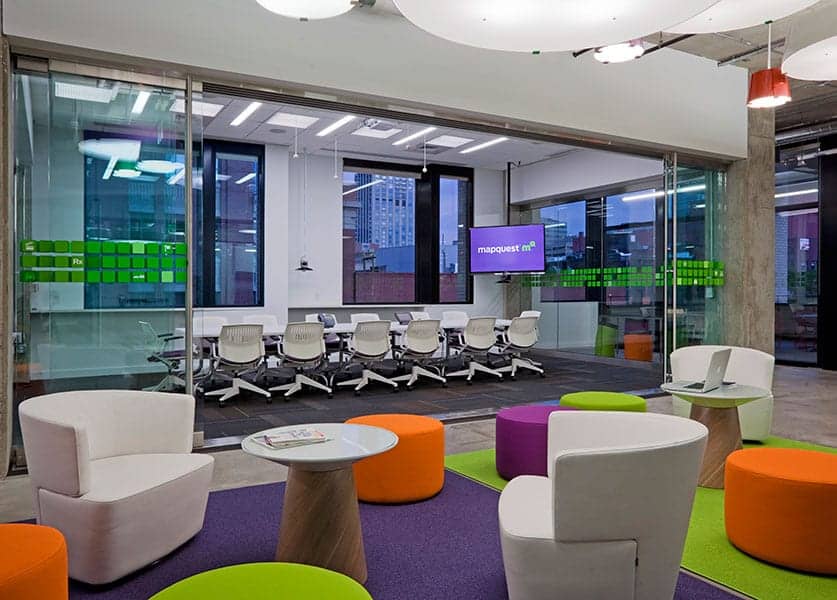More...
By Arnold Levin | Director of Workplace Strategy | July 22, 2014
It’s not uncommon to open a design or fashion magazine to a page touting the latest trends in interiors or lifestyle products. While trend spotting can be valuable in certain industries, it is ill advised when developing workplace design strategies because it marginalizes the need to develop a strategy on evidence-based research. There are, however, consistent themes we have seen that shed valuable insight into certain commonalities of client needs that can be helpful in approaching any workplace design strategy.
Reducing real estate costs through “smarter” use of real estate, informed by workplace strategies, has been the predominate theme for the past decade. What is occurring now, as a result, is the realization that there can only be so much real estate an organization can reduce without sacrificing effectiveness. While minimizing real estate costs remains paramount, creating workplace strategies that capitalize on organizational performance through employee effectiveness needs to be the litmus test when linking those elements together.

ValueClick in Aurora, Illinois by IA Interior Architects. Photo by Barbara Karant/Karant+Associates.
Another key theme we are observing is the need to enable more choice for employees in determining where and how they work. There is a correlation between employee productivity and his or her ability to choose where they can be most productive. Prescriptive work spaces where everyone works in similar work settings—for example, benching—is being questioned as the place where employees can most effectively engage in focus work, collaborative work, or social interaction. We have moved beyond the discourse of open office versus private office. We recognize that employees have differing work styles and that a successful workplace strategy needs to embrace these differences.
After a decade of predicting workplace characteristics based on themes, from mobile or distributed work to a millennial workforce, there is a view that many themes need to be assessed in light of specific organizational dynamics. This translates to workplace strategies that look at the efficiency of distributed work against long-term organizational needs of the client; and while Generation X and Millennials come to work with specific expectations, older generations remain at work thanks to the current financial climate that results in a multi-generational workforce.
Flexibility and adaptability are two other important themes. Today’s complex business environment calls for change as evolutionary processes become more fundamental to client-identified needs. Workplace strategies that accommodate these core components and overall philosophies have become increasingly critical.
Evolution in the market
The unfortunate reality is that the market has not evolved fast enough to tackle the challenges that could effectively be solved by appropriate workplace strategies. On the positive side, more and more organizations are aware of these issues despite research that demonstrates internal organizational and operational changes required for continued success are not in place. A report in the Economist dating from 2006 focused on the reality of a gap between the robust and volatile changes occurring in most organizations’ business environments, and the changes necessary to meet those challenges through new workplace strategies.
There are great opportunities in embracing and acknowledging the above themes and using them in approaching workplace strategies. Solutions that incorporate adaptable and flexible choices in work settings for a multi-generational workforce equally achieve organizational performance while minimizing real estate costs. Challenges reside in risk aversion in embracing change, the commitment of organizations to transform work processes and culture, and commitment to managing these changes. Reconciling opportunities and challenges will be the real game changer for business organizations.
Want to Learn More?
Learn more about the modern workplace theme of enabling employees with choice in the workplace. Click below to read "Choice Architecture: Success by Default."
How trendy is your workplace?



